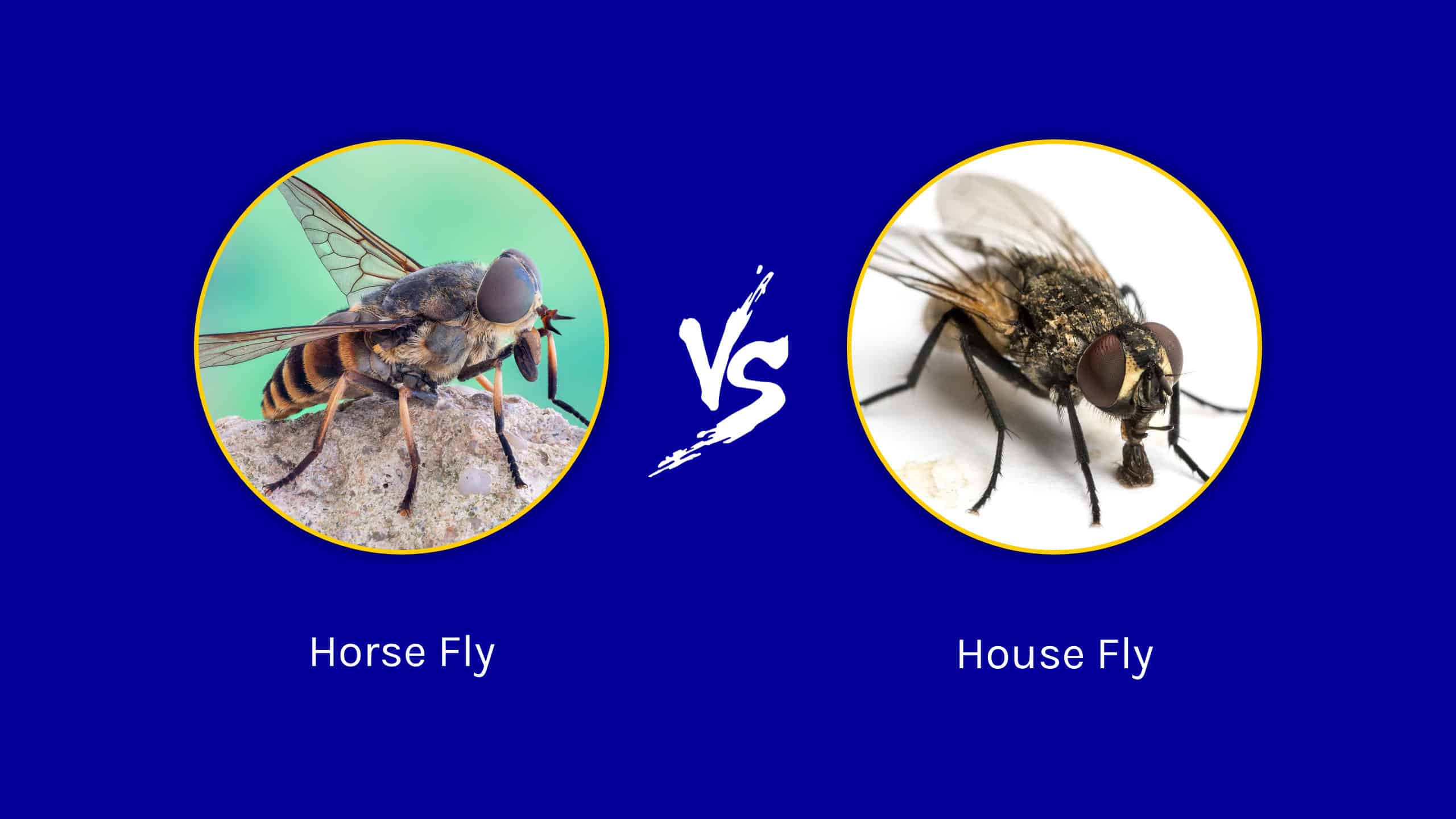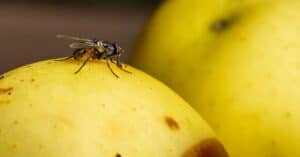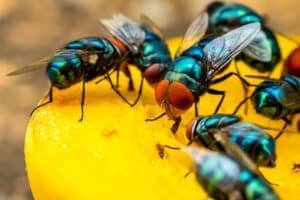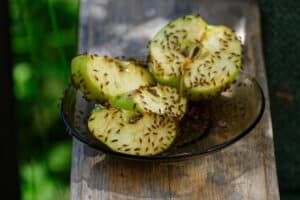Both horse flies and house flies are a nuisance that may even require pest control depending on the concentration of their populations. But can you tell the two apart? Discover the key differences between a horse fly vs. a house fly!
What is a Horse Fly?
Horse flies are insects. These flies are about the size of the house fly you see buzzing about, snacking on any food left available. They can also grow as big as a bumble bee, which can make anyone unfamiliar with horse flies uneasy around them. In fact, some people call horse flies “green-headed monsters.”
These flies are considered pests — they need hosts, which can include mammals like horses and cows. However, they may also choose to feed no humans or pets. If a horse fly manages to bite, you can expect several symptoms, including swelling and itchiness and for people who are allergic to anticoagulant compounds, symptoms can become more severe, including wheezing, dizziness, and weakness.
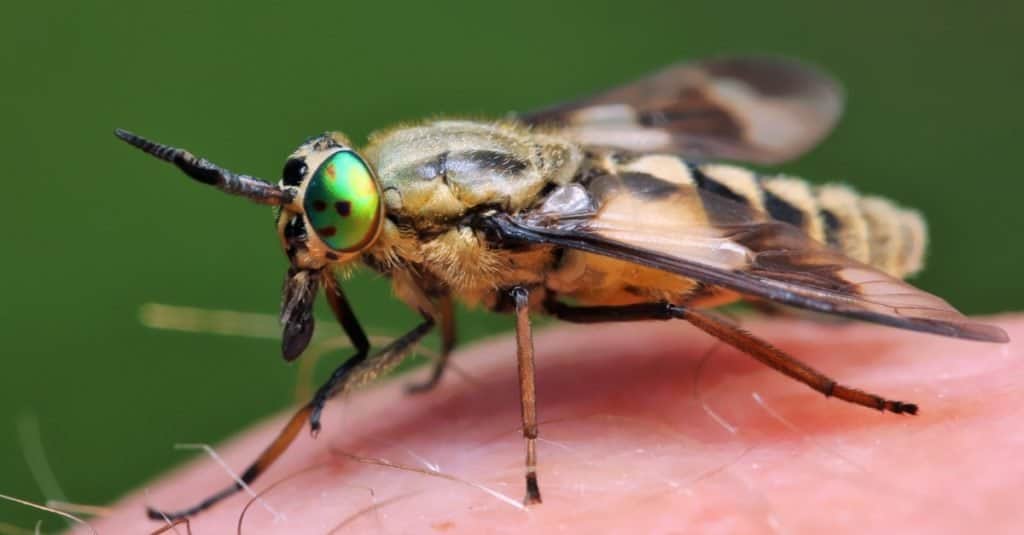
If a horse fly manages to bite, you can expect several symptoms, including swelling and itchiness.
©Achkin/Shutterstock.com
You can find horse flies in a variety of different environments, including wooded areas and along streams. These flies zip about quickly and may carry several different animal diseases like tularemia and anthrax. Although the females feed on blood, the males opt for a different set of menu items, including plant sap and nectar. They’re not too keen on finding hosts and ensuring survival off blood-sucking.
What is a House Fly?
You are likely more familiar with house flies than with horse flies. These are the flies you are constantly swatting away from your plate of food when enjoying a barbecue outdoors with your family. These are a nuisance and beyond that, they also carry diseases. If enough are concentrated in a single area, it could cause a public health issue.
House flies grow to about seven millimeters long and typically, the females are larger than their male counterparts. It’s easy to confuse the house fly with the stable fly but when you compare the appearance of a horse fly and a house fly, the differences are visually evident. If a house fly doesn’t have a consistent source of food, it dies off within two or three days.
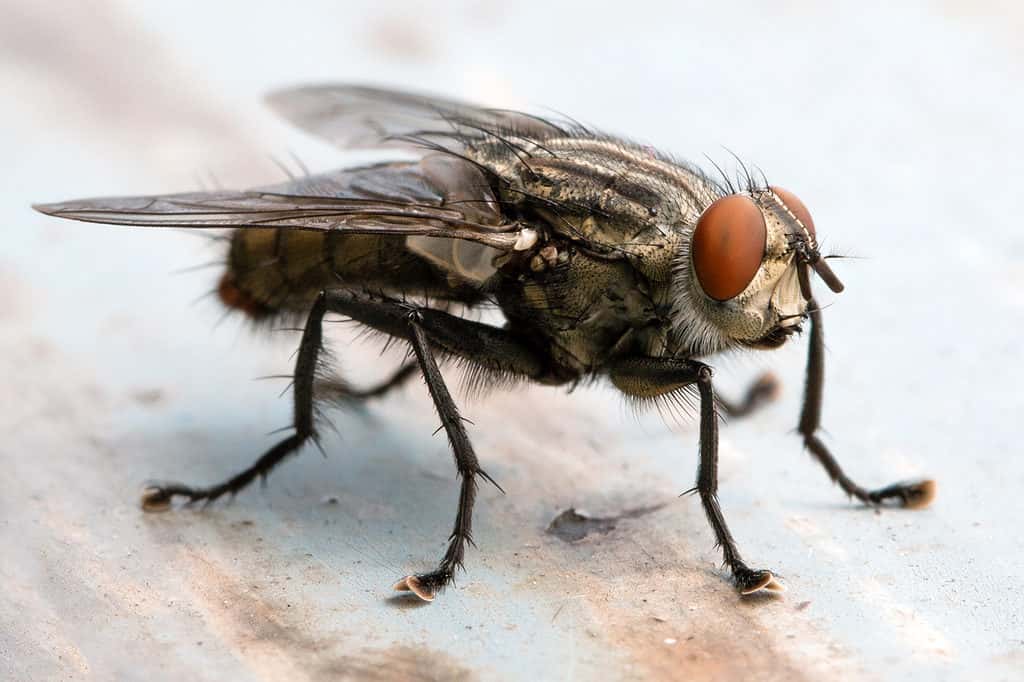
The most common types of flies you are likely to find in your home are house flies.
©Abel Tumik/Shutterstock.com
Horse Fly vs. House Fly: 5 Key Differences
| Horse Fly | House Fly | |
|---|---|---|
| Size | 3/4 to 1 1/4 inches long | 6 to 7 millimeters long |
| Diet | Males: nectar and pollen Females: blood from mammals | Food, animals, and fecal matter |
| Behavior | Aggressive biters | Diurnal and rest at night |
| Appearance | Solid wings and brightly colored eyes | Dull gray with four dark stripes |
| Life Span | 30 to 60 days | 28 days |
Thank you for reading! Have some feedback for us? Contact the AZ Animals editorial team.

